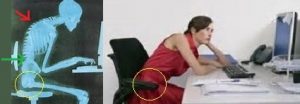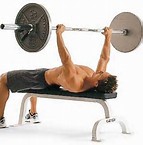The muscles of the torso are important for supporting and moving the spine, as well as stabilizing the hips. These muscles include the abdomen, back, glutes and upper legs. All these muscles are considered as our core. The strength and stability of our core are keys to fitness and athletic performance. Core training aims at strengthening these muscles that can protect the back from pain and injury while also improve the aesthetic look of the waistline.
In daily activities, labor work, sports and exercise, we need our core to help us lifting, turning the body and moving in all directions. The ability of the core to stabilize, accelerate, decelerate, rotate in multiple plans of motion affect us how well we balance and move efficiently.

We rely on the stability of midsection, namely lumbo-pelvic region, in supporting loads and providing a foundation for movement of arms and legs. The abdominal muscles always draw most of our attention for good looking or better functions. Actually the glutes also contribute significantly in the role of stability and power generation.
Some athletes demonstrate that the power was generated in the hips and transmitted to the distal extremities through a stiffened torso. The torso muscles are used more as anti-motion controllers primarily for acceleration and deceleration.
 Most of us are bound by desk work and sitting for too long weakens the glutes which fails to extend the hips joint as it is supposed to do. Not only loss of power but even not able to carry out its function as simple as standing up. Instead of extending through the hip joints, lower back has to compensate for this and carry the loads. The extra burden makes us more susceptible to back injury due to overuse.
Most of us are bound by desk work and sitting for too long weakens the glutes which fails to extend the hips joint as it is supposed to do. Not only loss of power but even not able to carry out its function as simple as standing up. Instead of extending through the hip joints, lower back has to compensate for this and carry the loads. The extra burden makes us more susceptible to back injury due to overuse.
The core is activated in all activities we perform. Instead of isolated training targeted at abdominal muscles, pick the exercises that train our body to carry out any task in different standing position as the core is engaged when most movements occurred in upright position. Always take core stability into consideration in the training is beneficial to improved performance and injury prevention.
Take chest press as an example. When we lie down on the bench to perform b arbell bench press, less demand put on the core muscles for stabilizing. If changing to upright position pushing against the resistance from pulleys, rubber band or our body weight on a suspension tools, we can recruit more core muscles as well as the glutes to maintain balance and to radiate strength to chest, shoulder and arm muscles resisting the external weight.
arbell bench press, less demand put on the core muscles for stabilizing. If changing to upright position pushing against the resistance from pulleys, rubber band or our body weight on a suspension tools, we can recruit more core muscles as well as the glutes to maintain balance and to radiate strength to chest, shoulder and arm muscles resisting the external weight.

Core training forms the integral part of the workout program regardless the training goal whether you are looking for general fitness or higher sports performance.For those looking for better function for daily demands, train for core strength and endurance. For recreation and competitive athletes, train for power as well preparing for even more dynamic activities involving speeds and loads.
The effective core training program begins with deep trunk muscles conditioning. This is the fundamental and essential ground work for these muscles to restore its function before facing bigger movement or uneven loads. Along with breathing exercises, static-hold exercises such as planks aims at isolated strengthening and subsequently integrating along with dynamic movements. Then progression to total body strengthening exercises to train the core muscles in all planes of motion and challenge the body to stabilize with unstable base of support such as in a lunge position or split stance, balancing on one leg. You will find out how functional and practical it is as it finally merge to movement and mobility training.